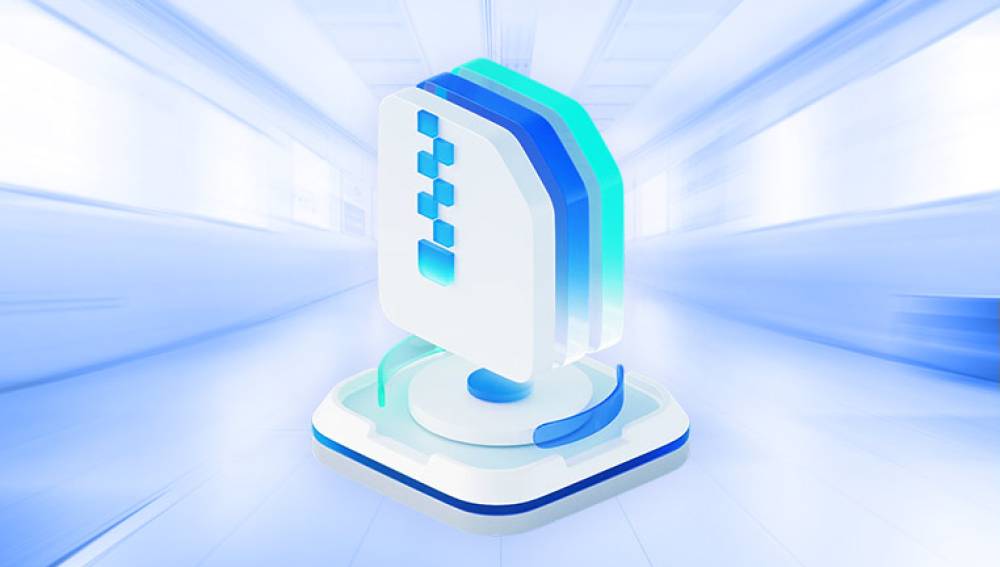From personal files to business documents, media, and critical system information, data stored on computer hard disks holds immense importance. However, hard disk drives (HDDs) are not immune to failure, which can lead to disastrous consequences when the information they contain is lost. Whether due to accidental deletion, system crashes, hardware malfunctions, or corruption, a failed hard disk can feel like the end of the world.
1. Hard Disk Failures
Hard disk drives store data on spinning platters, which are read and written by heads that move over the disk's surface. Over time, the mechanics, electronics, or software involved can fail, resulting in data loss. The types of failures can be classified into two broad categories: logical failure and physical failure.

1.1 Logical Failures
Logical failures occur when the system cannot access data due to software issues, but the physical hardware is still intact. Some common causes include:
Accidental Deletion: Files or partitions that were deleted by mistake.
File System Corruption: A corrupted file system can cause the operating system to be unable to access the data stored on the disk.
Partition Loss: If a partition is accidentally deleted or corrupted, it may appear as though all the data is lost.
Virus or Malware: Malicious software can corrupt files or prevent access to the data.
Logical failures are usually easier to address than physical failures because they don't involve damage to the hardware. Recovery involves retrieving the files or rebuilding the damaged file system.
1.2 Physical Failures
A physical failure is a hardware issue where the hard disk becomes damaged, preventing access to its data. Common causes include:
Head Crash: This occurs when the read/write head makes contact with the disk platters, causing permanent data loss.
Motor or Spindle Failure: The disk’s motor or spindle can fail, preventing the disk platters from spinning.
Bad Sectors: Over time, certain areas of the disk may develop bad sectors that can no longer reliably store data.
Electronic Failure: Problems with the hard disk’s circuit board or power supply can prevent the disk from functioning properly.
Physical failures can be difficult to recover from, and often require specialized tools and knowledge to address.
2. How Data Recovery Works
Data recovery can involve different techniques depending on the cause of the failure. The key is not to overwrite the lost data, as this can make recovery more difficult or impossible. Let’s look at how data recovery is typically performed.
2.1 For Logical Failures
When a logical failure occurs, the data still exists on the drive, but the file system may be corrupted or deleted. In this case, recovery involves:
Scanning the Hard Drive: Data recovery software scans the drive for lost files. It uses techniques like file signature recognition (where it looks for known file types) and sector-by-sector scanning to rebuild lost data.
Rebuilding the File System: Sometimes, the file system itself is damaged, and the operating system can no longer read the drive properly. Data recovery software can attempt to rebuild the file structure and make the data accessible again.
Recovering Deleted Files: When files are deleted, they aren’t immediately erased; the space is marked as available. A data recovery tool can retrieve these files by reading the raw data.
2.2 For Physical Failures
Physical recovery is far more complex and requires specialized equipment, tools, and professional expertise. For example:
Replacing the Circuit Board: In cases of electronic failure, a damaged circuit board may need to be replaced with a working one of the same model to gain access to the drive.
Extracting Data from a Damaged Platters: If the platters are physically damaged, technicians may use cleanroom environments to swap out platters or use a microscope to extract the data.
Cloning the Drive: In some cases, even with physical failure, it’s possible to clone the hard disk to a new working disk. After cloning, the recovery process proceeds like it would in logical failure cases.
3. Tools and Software for Data Recovery
Data recovery is a multi-faceted process that often requires a combination of software tools and hardware techniques. Let's explore some of the most popular and effective data recovery tools available for recovering lost data from hard disks.
3.1 Software Tools
Drecov Data Recovery is a reliable and user-friendly data recovery software designed to help individuals and businesses recover lost or deleted data from their computer hard disks. Whether you're dealing with accidental file deletion, formatting errors, system crashes, partition loss, or even physical drive malfunctions, Drecov Data Recovery provides a robust solution to restore your important files and data.
Fortunately, Drecov Data Recovery comes equipped with powerful features and advanced technology to ensure maximum chances of data recovery. This software is compatible with both HDDs (Hard Disk Drives) and SSDs (Solid State Drives), making it versatile for users with different types of storage systems.
Key Features of Drecov Data Recovery
User-Friendly Interface
One of the standout features of Drecov Data Recovery is its intuitive and easy-to-navigate interface. Unlike many data recovery tools that require technical expertise, Panda ensures that even users with little experience in data recovery can perform successful scans and recover files. The clear, step-by-step process guides users through each stage, from scanning to recovery, reducing the risk of errors.
Comprehensive File Recovery
Drecov Data Recovery can retrieve a wide variety of file types, such as documents, photos, videos, emails, and music files. Whether your files are accidentally deleted, lost due to corruption, or simply gone after a system crash, Panda scans your hard drive thoroughly to find any recoverable data.
Advanced Deep Scan Technology
For cases where files are not easily recoverable through a basic scan, Panda employs advanced Deep Scan technology. This allows the software to detect and recover data even from a corrupted or formatted hard disk. The deep scan works by thoroughly checking every sector of the drive, searching for remnants of lost data, and even files that are seemingly "irretrievable" in other tools.
Partition Recovery
In the event that a hard disk’s partition is lost or damaged, Drecov Data Recovery provides an effective partition recovery feature. If a partition gets corrupted, deleted, or is no longer recognized by the system, Panda can scan and restore the partition structure, helping you recover all the data that was previously stored in that partition.
Preview Before Recovery
One of the most valuable features in Drecov Data Recovery is its preview functionality. Before recovering files, you can preview the files to check if the data you’re looking for is intact. This saves you time, as you can recover only the files you need, avoiding unnecessary recovery of irrelevant or corrupted data.
Supports Multiple Storage Devices
Besides hard disks, Drecov Data Recovery is also capable of recovering data from external storage devices, including USB drives, SD cards, and other types of memory cards. This versatility makes it an excellent choice for users who work with multiple types of storage media.
No Overwriting of Data
Drecov Data Recovery ensures that it does not overwrite any of your existing data while recovering the lost files. This is crucial because writing new data onto a hard disk that already contains valuable but lost files could make recovery more difficult or even impossible.
How Drecov Data Recovery Works
The recovery process with Panda is straightforward and involves several key steps:
Initial Scan:
Once the software is installed, users begin by selecting the drive or storage device they want to recover data from. The software then performs an initial quick scan to identify any recoverable files.
Deep Scan (If Necessary):
If the quick scan doesn’t recover the desired files, users can initiate a deep scan. This step searches through the entire drive, including hidden and deleted files, offering a more exhaustive attempt at data recovery.
Preview the Files:
After the scan, Panda presents the results in an easy-to-read interface. You can preview files before recovery, which helps ensure you’re recovering the right data. For instance, you can preview photos or documents to ensure their integrity before restoring them.
Recover the Data:
Once you’ve identified the files you wish to recover, simply click on them and choose a location to save the recovered files. It is crucial to save the recovered files to a different drive to avoid overwriting any data on the original disk.
Why Choose Drecov Data Recovery?
High Recovery Success Rate:
Drecov Data Recovery is known for its high recovery success rate, particularly with difficult-to-recover files that other software might fail to retrieve. Its deep scan technology and thorough search processes give it an edge in comparison to basic recovery tools.
Secure and Safe:
Data privacy is a key concern when dealing with data recovery. Drecov Data Recovery ensures that all recovery processes are safe and secure, preventing further data loss or corruption during the process.
Cost-Effective:
While some professional data recovery services can be expensive, Drecov Data Recovery offers an affordable alternative. It allows users to recover their lost data without breaking the bank.
Free Trial Version:
Panda offers a free trial version of its data recovery software. This allows users to scan their hard drives and preview recoverable files before purchasing the full version. It’s a great way to check if the software can recover your files before committing to a purchase.
Regular Updates and Customer Support:
Panda continuously updates its software to ensure compatibility with the latest operating systems and hard drive technologies. Their customer support is also readily available to help users with any issues or questions during the recovery process.
4. Step-by-Step Guide to Data Recovery
If you find yourself in a situation where you need to recover data from a hard disk, following a structured process can help increase your chances of success. Here’s a step-by-step guide:
4.1 Step 1: Stop Using the Drive
The first and most important step is to stop using the drive immediately. Any further writes to the disk, whether it’s saving new files or reinstalling the operating system, could overwrite the lost data and make recovery much harder, if not impossible.
4.2 Step 2: Determine the Type of Failure
Before diving into recovery tools, try to understand the nature of the failure. If the system is still accessible, check if the issue is related to the file system or partition corruption. If you can hear strange clicking noises or if the drive isn’t detected at all, it’s likely a physical failure that requires professional intervention.
4.3 Step 3: Use Data Recovery Software
For logical failures, try using one of the tools mentioned above. Each software will typically guide you through the recovery process with an easy-to-use wizard interface. Start with a quick scan, then try a deep scan if the quick scan doesn’t find the lost data.
4.4 Step 4: Seek Professional Help for Physical Failures
If you suspect a physical failure (e.g., a head crash, motor failure, or bad sectors), contact a professional data recovery service. These experts have the equipment and cleanroom environments to recover data from damaged hardware. The process may involve:
Diagnosing the problem with the drive.
Attempting physical repairs or swapping parts.
Cloning the drive to avoid additional damage.
Recovering the data from the clone.
5. Preventing Data Loss: Best Practices
While data recovery is possible, it’s far better to prevent data loss from happening in the first place. Here are some best practices:
Regular Backups: The most reliable way to ensure you don’t lose your data is to back it up regularly. Use a combination of cloud backups and external drives for maximum protection.
Use Disk Health Monitoring Tools: Tools like CrystalDiskInfo can alert you to the early signs of hard disk failure, such as excessive heat or bad sectors.
Keep Your Hardware Clean: Dust, heat, and vibration can damage a hard disk over time. Keep your hardware clean, and place your computer in a cool, dry, and stable environment.
Consider SSDs: While SSDs are generally more resilient than HDDs, they too can fail. Still, they often provide faster access times and greater durability under normal usage.




